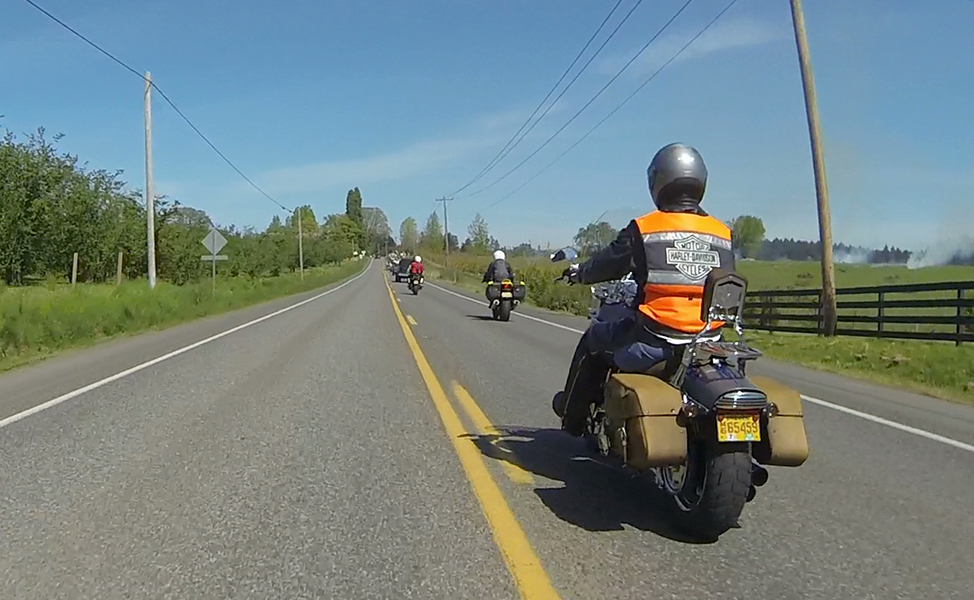Introduction
You are riding in a group of friends. The morning was fun, but a little stressful – the group rides too fast and too close together for your liking, and you don’t know the route you’re following. At lunch, you notice a couple of your friends having beers with their food. These are the same riders who organized the ride and the ones setting the pace. They suddenly don’t seem like such experts anymore.
You overhear that the afternoon will have even more challenging roads and you’re feeling a little tired after a big lunch.


The Wrong Response
Many riders in group settings ignore their better judgment and just go with the flow. They ride faster than the speeds at which they are comfortable and tolerate a much smaller space cushion than usual, trying to “stay in formation” or keep the group together. They fail to recognize when another rider may be impaired — or choose not to intervene. Worst, they ignore warning signs like their own fatigue and anxiety that tell them when to quit the ride and go home.
Don’t:
- Let the group decide your speed
- Let the group decide your space cushion
- Ignore the warning signs
When riders choose to go along with a group in an effort to fit in, they often end up getting in over their heads and crashing. Don’t underestimate the power of peer pressure — and don’t assume it’s just for teenagers!
The Right Response
The most commonly issued advice in the riding community is the concept of ride your own ride. This simple logic declares that you focus on the road, and not the other riders. Ride only at the speed at which you are comfortable and only in the position you are comfortable. Do not let “keeping the group together” become the priority and do not hesitate to take a break or leave the group when you have had enough.
Do:
- Ride your own ride
- Do not worry about staying together
- Take breaks or leave the group when necessary

The Reality
Oregon loses a half dozen or more riders a year to the same simple mistake: Ignoring common sense when riding in a group. Crashes result when a rider quits paying attention to the road and target fixates on the riders around them:
- When someone ahead makes a mistake and runs off on a corner, the next rider follows them right off the same corner and into the rocks.
- When an animal jumps out of the bushes, the rider has no warning because he or she wasn’t watching the road — they were watching the riders ahead. And there’s nowhere to go anyway because the group is in too tight a formation.
- If traffic suddenly stops, the riders in the back are unprepared and end up crashing — and taking out riders in front of them.
The list goes on. The common threads in all these crashes are peer pressure and a poor visual lead. Even mature, experienced riders can become distracted trying to stay together, keep up and fit in. You can get so focused on trying to participate and stay in formation, you lose sight of the real priority — having fun, riding your own ride, watching the road and riding within your limits. Unfortunately, those other riders won’t be able to ride your bike for you when you get in over your head!
If the concepts of target fixation or space cushioning are unfamiliar to you, or if you have trouble keeping up on group rides, Team Oregon recommends you seek help: Enroll in a training course and learn how to ride your own ride.